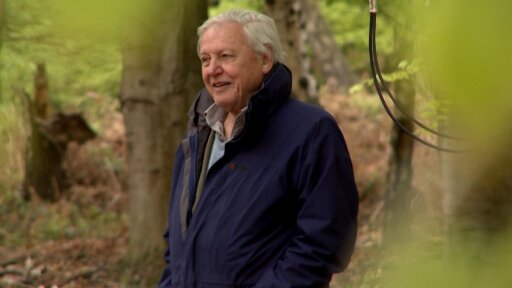Experience the unforgettable moment when Sir David Attenborough encounters Lonesome George, the last of his kind. In an emotional final meeting, watch as the legendary naturalist comes face-to-face with the final Pinta Island tortoise just 14 days before the tortoise’s death.
Features



- Lonesome George was an icon of our time.
He was representative of everything the Galapagos stood for.
He was the last one left of his species, the rest of his kind driven to extinction by the pressures of living in the age of man.
- Nobody went to the Galapagos without visiting Lonesome George.
I'd met him before on earlier trips to, to the Galapagos, but we asked to go and see him again and the authorities were very properly protective of him.
We could only do it before the gardens open.
And we could only be allowed with him for just a very few minutes.
So we all got up in the dark, and Lonesome George was asleep.
So we got the camera in position, and I called in and waited, waited for Lonesome George to wake up.
And I waited a long time.
And I thought maybe, maybe we'd come too late.
And he isn't gonna wake up at all.
But eventually he did.
- Action!
He's about 80 years old, and he is getting a bit creaky in his joints - - as indeed am I.
He is arguably the rarest animal in the world.
Certainly there can be none rarer for he is the last of his kind.
When he dies, the Pinta species of Galapagos tortoise will be extinct.
But he's a very important animal, probably more than any other single creature.
He's focused the attention of the world on the fragility of our environment.
I delivered my piece to camera and then just at the right moment, Lonesome George heaved himself up and just moved slowly away.
And that was that.
My interview was over.
Just 14 days after we filmed Lonesome, he died in his sleep.
It was just one of those moments filming in, in natural history because there was David and Lonesome George.
And Lonesome George's last big appearance.
It was, it was really extraordinary.
